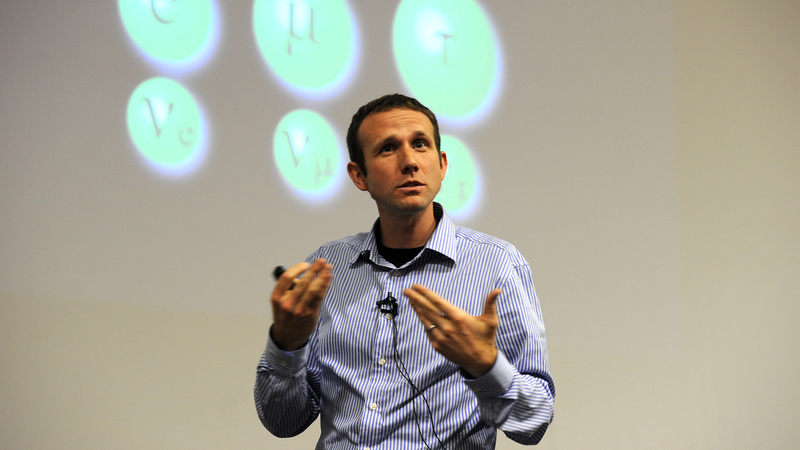P-rating for particle physicist
02 April 2013
Despite the "long and often complicated path" it takes to uncover the laws of physics, UCT's latest P-rated scholar, Dr Andrew Hamilton, believes they are inherently simple. The National Research Foundation (NRF) bestows P-ratings on young researchers (usually younger than 35 years old) who have the potential to become world leaders in their field.
Hamilton's academic journey has spanned three continents and has seen him contribute to more than 200 peer-reviewed publications as a member of two large proton collider experiments, ATLAS and the Collider Detector at Fermilab (CDF). He joined UCT's Department of Physics as a lecturer in July 2011, following a five-year stint at the ATLAS experiment, which he joined as a postdoc with the University of Geneva. The ATLAS project is one of two general-purpose detectors at the Large Hadron Collider (LHC) at the European Centre for Nuclear Research (CERN), the decades-long experiment to detect the Higgs boson particle. Here, the Canadian focused on helping to develop the ATLAS trigger system. "The trigger system is a vital component of the experiment, which selects which events to record for further analysis and which to discard," he explains.
His true interest, however, lies in analysing and interpreting the data collected by the trigger, specifically data related to the Higgs boson's decay into two photons, which is what the Higgs boson does in the Standard Model of the Universe. Hamilton's teaching career began at the University of Alberta as a teaching assistant in 2001, and evolved into the supervision of master's and doctoral students at the University of Geneva. He also co-ordinated the Swiss Institute of Particle Physics' (CHIPP) doctoral programme from 2010 through to 2011.
Currently teaching physics from first-year to honours level, Hamilton previously taught nuclear and particle physics and advanced nuclear physics to senior undergraduate students. By sharing his own excitement for explicating science's most fundamental understanding of the Universe, he helps encourage students' own enjoyment of physics, he says in summing up his teaching philosophy. His well-publicised public lecture at UCT in September 2011 followed the media hype around the first possible sighting of the Higgs boson particle. Asked what the Higgs Boson particle - if conclusively found - could be used for, Hamilton's frank response drew mirth from the large audience.
"I haven't the foggiest what we could possibly use the Higgs boson for," he admitted at the time. "But it is cool to know that the Standard Model works!" What inspires his curiosity about the smallest stuff that makes up our Universe? "The idea of breaking down our understanding of the Universe into its most fundamental pieces attracted me to particle physics," he says. "The ability to observe a physical phenomenon as profound as the Higgs boson has kept me interested." Hamilton's present research interests revolve around Standard Model direct photon production studies. He plans to continue research at the high-energy frontier of particle physics. "The discovery of the Standard Model Higgs boson would be a triumph for the Standard Model, but there remain fundamental questions that the Standard Model does not answer," he observes. "Perhaps the largest question in physics is how to realise a unified theory of gravitation and the forces of the Standard Model." Due to the fundamental nature of contemporary particle physics, Hamilton admits that the impact of his and his peers' research on society might not be immediately visible.
"Just like people doing fundamental research in the early 20th century could not have predicted that an understanding of quantum mechanics would lead to the development of the computer, we don't know where our current fundamental research will lead."
 This work is licensed under a Creative Commons Attribution-NoDerivatives 4.0 International License.
This work is licensed under a Creative Commons Attribution-NoDerivatives 4.0 International License.
Please view the republishing articles page for more information.










